He was responsible for the slaughter of Wola. Under his orders there were degenerates who massacred Ochota. His henchmen massively killed men, women and children in Warsaw streets, courtyards, and in insurgent hospitals. His crimes are known, but he was never punished.
The young lawyer from Cottbus has come a long way from the "Nazi lawyer" to Himmler's "governor" in the Wartheland and the pacifier of the Warsaw Uprising. Even more twisted, however, is the path that took him from Nuremberg ... to the mayor of Westerland on the island of Sylt! This executioner of the Uprising lived his days in peace, surrounded by sympathy and respect.
Road to Warsaw
The day after the Nazis won the elections to the Reichstag, Heinz Reinefarth, feeling the upcoming boom, joined the NSDAP, and at the end of the year became a member of the SS.
Reinefarth's career flourished under his position as "Nazi advocate" . But young Reinefarth was successful not only in civilian life. During the September campaign, he fought in the Wehrmacht and achieved the Iron Cross and promotion . The campaign in the West brought him real glory, where, as an ordinary feldfebel, he led to the capture of several thousand Frenchmen, for which he was awarded, as one of the few non-commissioned officers, the Knight's Cross.
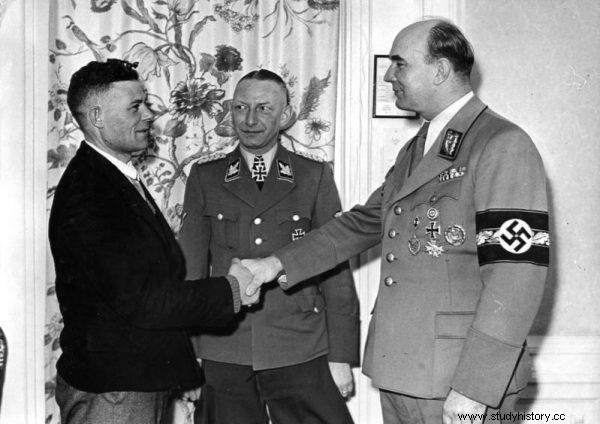
Heinz Reinefarth has shown himself in the action of Heim ins Reich. To make room for the Germans from the East, Poles had to be thrown out of their homes ... In the photo, together with Arthur Greiser (on the right), he welcomes the millionth German resettled to the Warta Country (source:Bundesarchiv, license:CC BY-SA 3.0 de).
From April 1942 he was a major general of the police. He was then assigned to the headquarters of the SS Chief Inspector in the Protectorate of Bohemia and Moravia, where he was summoned by Kurt Daluege, his long-standing protector. In September 1943, Reinefarth was transferred to the Main Office of the Order Police of the SS.
Daluege's position was weakened by the confrontation with Hans Frank, but Reinefarth already had a new, more powerful protector. Himmler himself took an interest in it who, as Philipp Marti writes in his book "The Reinefarth Case": carefully searched for people for future management positions. The main criteria were ideological compliance and efficiency (…).
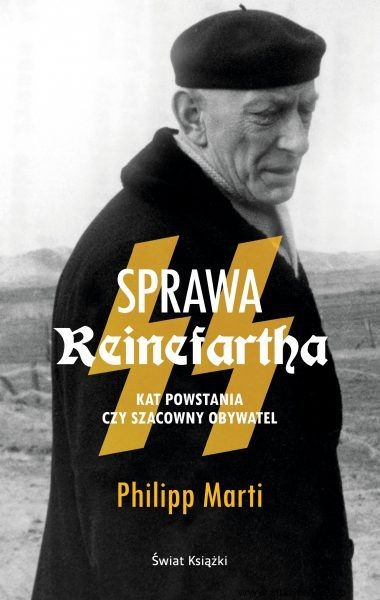
Reinefarth excelled in both, therefore from January 1944 he served as the High Commander of the SS and Police in Wartheland. Despite the fact that he described his position as "a noisy title, but no content" and "completely meaningless", he tried to prove it somehow. The occasion was the action of resettlement of the Polish population and creating places of residence for Germans from the Black Sea . Philipp Marti in the "Reinefarth Case" quotes his words, spoken at the meeting of the heads of the deportation staffs:
These numbers are not enough. More Black Sea Germans arrive than Poles are displaced. (...) Only success counts. (…) You shouldn't worry about the little things (…).
As a result of this approach, the cases of the brutal expulsion of Poles from Warthegau grew stronger . For Reinefarth, however, fate chose a different task - it was not to relocate Poles, it was to kill them.
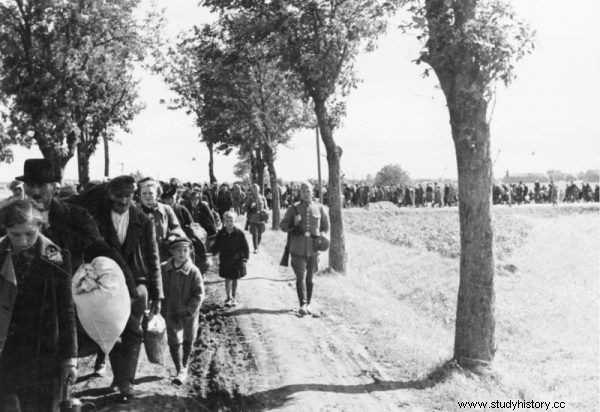
Reinefarth's ambition made the action of expelling Poles from Wielkopolska even more brutal (author:Wilhelm Holtfreter, source:Bundesarchiv, license:CC BY-SA 3.0 de).
"I have less ammunition than prisoners"
The outbreak of the uprising on August 1, despite the fact that the Germans expected more action by the Polish underground, came as a surprise to them. The lack of reserves, as all possible forces fought the Red Army, forced them to use what was at hand.
On August 3, in Poznań, Himmler sent Reinefarth to Warsaw . He was accompanied by two battalions of policemen from Greater Poland, which were to constitute the core of the forces intended to suppress the insurgency.
This article has more than one page. Please select another one below to continue reading.Attention! You are not on the first page of the article. If you want to read from the beginning click here.
The date of the main attack was set for August 5. The task was to break through to the Bruhl Palace, where the city commander and the military administration had taken refuge. The attack was also to be attended by two units subordinate to Reinefarth the day before, and whose dubious "fame" then spread around the world . These were the SS Dirlewanger special regiment, made up of common criminals, and the Bronisław Kamiński Assault Brigade of the Russian Liberation Army.
What happened in Warsaw on August 5th surpassed all the crimes committed so far during the war.
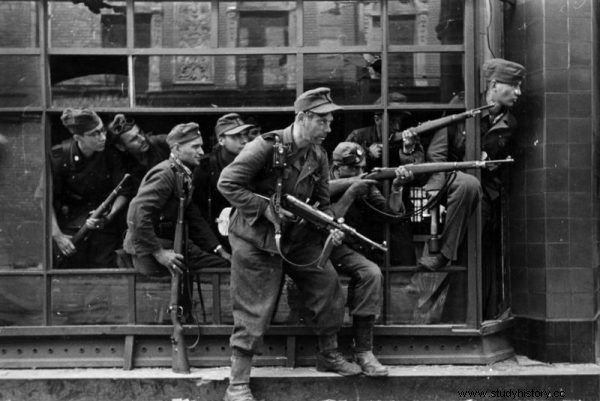
The Germans used everything that was at hand to pacify Warsaw. The photo shows the soldiers of the Dirlewanger regiment (source:Bundesarchiv, license:CC BY-SA 3.0 de).
The German attack started at 7 am. Simultaneously with the hostilities, mass extermination of the population was taking place. Only the insurgents who were considered "bandits" and "partisans" were not killed, but also civilians, women, old people and children were murdered.
In the Ursus factory itself, Reinafarth's subordinates were to murder up to six thousand Poles - men, women and children. No one was spared, not even those in hospitals. In the Wolski Hospital, in addition to the staff, three hundred patients were shot, and in the hospital of St. Lazarus the number of victims exceeded one thousand. After the people were murdered, houses were burned - entire streets were destroyed, regardless of whether someone was hiding in the cellars.
The enormity of the crimes committed was such that some of the police soldiers ended up with a nervous breakdown. In total in Wola alone, from 20,000 to 40,000 civilians were murdered during just one day when the German soldiers were commanded by Reinefarth. The number of victims in Ochota was smaller, because Kamiński's wetboys were more interested in robberies and rapes than in carrying out mass murders, but the local population also suffered huge losses during the brutal "evacuation" to the transit camp in Zieleniak.
It is impossible to say how many people were killed by the troops led by Reinefarth due to the enormous mess in the command structures of the German army at the time. The lower limit of casualties can be set at 45,000-50,000 civilians. As for the maximum number of murdered people, it seems that the figure of 100,000 may be exaggerated, but we will never really know. The slaughter by the "Reinefarth" battle group was certainly the greatest massacre committed in just a few hours during the entire war.
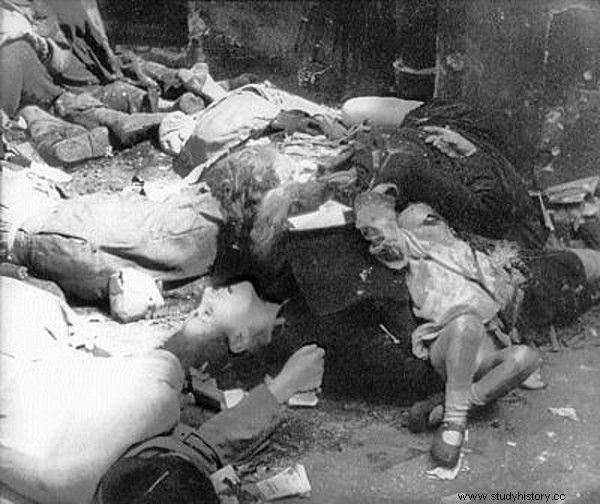
For the Nazi degenerates, the sex and age of the victims did not matter in the slightest. The photo shows Polish civilians murdered in an execution at ul. Marszałkowska 111 (source:public domain).
Is Reinefarth responsible for the crimes of its subordinate degenerates? Did he give the order to kill the population in accordance with Himmler's intention - the majority of those present [at a meeting in the morning of August 5 with the commanders of the operational teams] did not want to remember later - writes Philipp Marti in the Reinefarth case. We do know, however, that threatened with a court martial on those who did not have the right energy.
One of the participants in this conference testified later:
(...) I had a feeling that in practice it was probably meant to be understood - that in all insurgents were to be killed . If I am asked whether including civilians, I can only say that in practice the insurgents were all civilians.
After his return to Poznań, Reinefarth received the Oak Leaf for the Knight's Cross for his "achievements", and then he was given the dubious honor of commanding Kostrzyn's defense, which he almost died when he was arrested after leaving the fortress, against Hitler's orders.
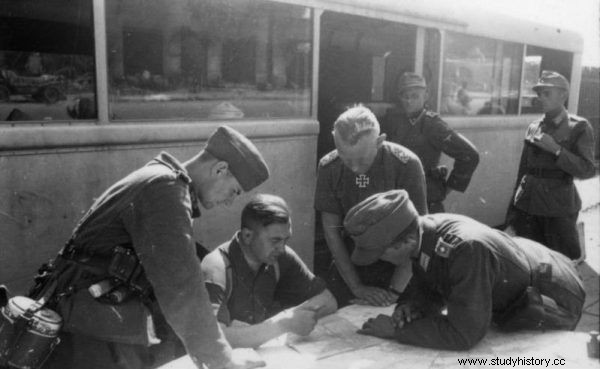
Was Reinefarth responsible for the crimes of his subordinates? He certainly made sure that Himmler's order was properly understood ... (author:Gutermann, source:Bundesarchiv, license:CC BY-SA 3.0 de).
Problems with extradition
After the defeat of Germany, Reinefarth spent three years in various places as an American prisoner of war and as an intern. The interrogated person claimed that Himmler's order to kill all Varsovians, regardless of sex and age, found out only in Warsaw , the Dirlewanger soldiers were not subject to him at all, and he was responsible for Kamiński's people only in terms of supply. He himself absolutely did not see that women and children were shot.
The Poles repeatedly demanded his extradition from the Allies. However, they refused, explaining enigmatically that they would still need it. However, it has not been reported that he was released in the summer of 1948. Or that earlier, in 1947, he came into contact with counterintelligence of the American army.
This article has more than one page. Please select another one below to continue reading.Attention! You are not on the first page of the article. If you want to read from the beginning click here.
It is true that he did not provide much valuable information and quite quickly, because already in September 1947 it was found that there were no further questions or objections to the extradition, however, the State Department intervened. The Cold War had begun and people like Reinefarth, according to the US, could have been used by the Soviets against the United States . It is believed that he had too much US military information to safely allow him to go to some Soviet domination area - quotes Philipp Marti.
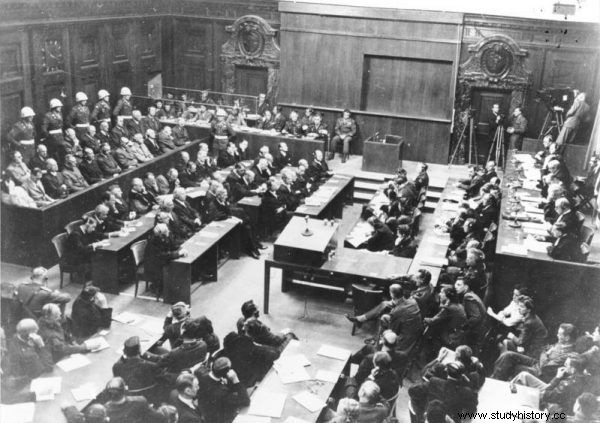
The Allies decided that Reinefarth would be useful in Nuremberg as a witness! (source:Bundesarchiv, license:CC BY-SA 3.0 de).
New life
After his release, Reinefarth traveled to Westerland on the island of Sylt, where his family lived in the former summer cottage of his parents-in-law. Szlezwig-Holstein was then a stronghold of German refugees from the East. Many war and occupation criminals were also hiding there, and the majority of power in the federal state was exercised by former members of the NSDAP. The denazification project in this federal state was doomed to failure. Reinefarth was among his people.
In 1954 he became mayor of Westerland on the island of Sylt. Dear and much respected official , showed excellent administrative skills and developed the region he ruled, which won him applause from the locals.
He did not mention his past, and if anything, only elements about the defense of Kostrzyn and Hitler's sentence to death. He transformed the confidence he gained as a result of good governance into another political success, which was the election of the Schleswig-Holstein region to the Landtag . The secret he was hiding came to light in 1957. On the pretext of making a film about the island of Sylt, a pair of East German journalists met with him.
Soon, a film about the crimes of Reinefarth's troops in Warsaw was produced in eastern Germany - it was the nail in the coffin of his political career, but it didn't hurt him much. He calmly lived to see the end of his term of office, and then returned to the legal profession he had practiced before the war. On an island to which he contributed so much, he was respected until the end of his days.
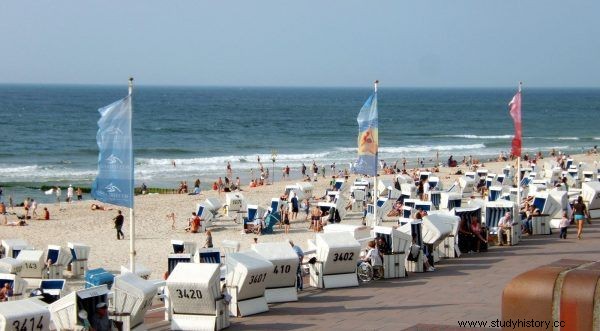
Reinefarth became the mayor of an idyllic seaside town. It is here that he lived his days in peace. The photo shows a beach in Westerland (author:Toksave, license:CC BY-SA 3.0).
It took 35 years for the Landtag of Schelwig-Holstein and the city of Westerland to recognize the crimes committed by their official. Reinefarth has NEVER been held responsible for the acts committed by the troops under his command. Among the problems were the witnesses - von dem Bach covered Reinefarth until the end of his days, Kamiński and Dirlewanger were long dead, and those who testified against the SS general were too low-ranking or their testimony was not considered credible.
